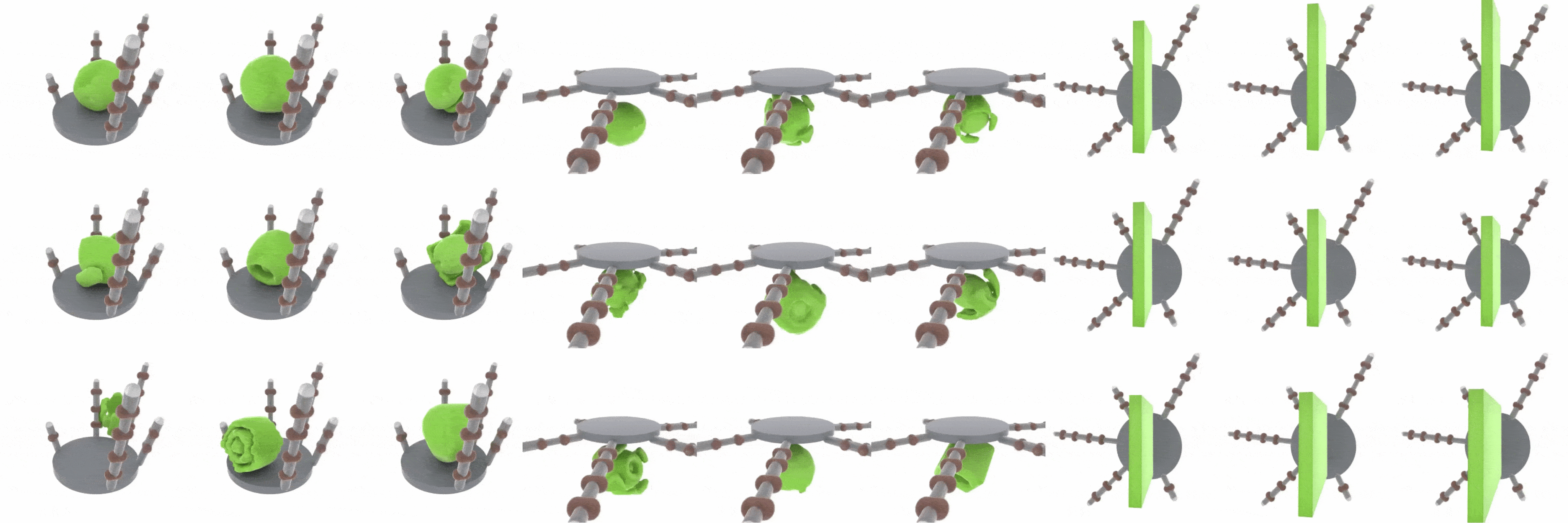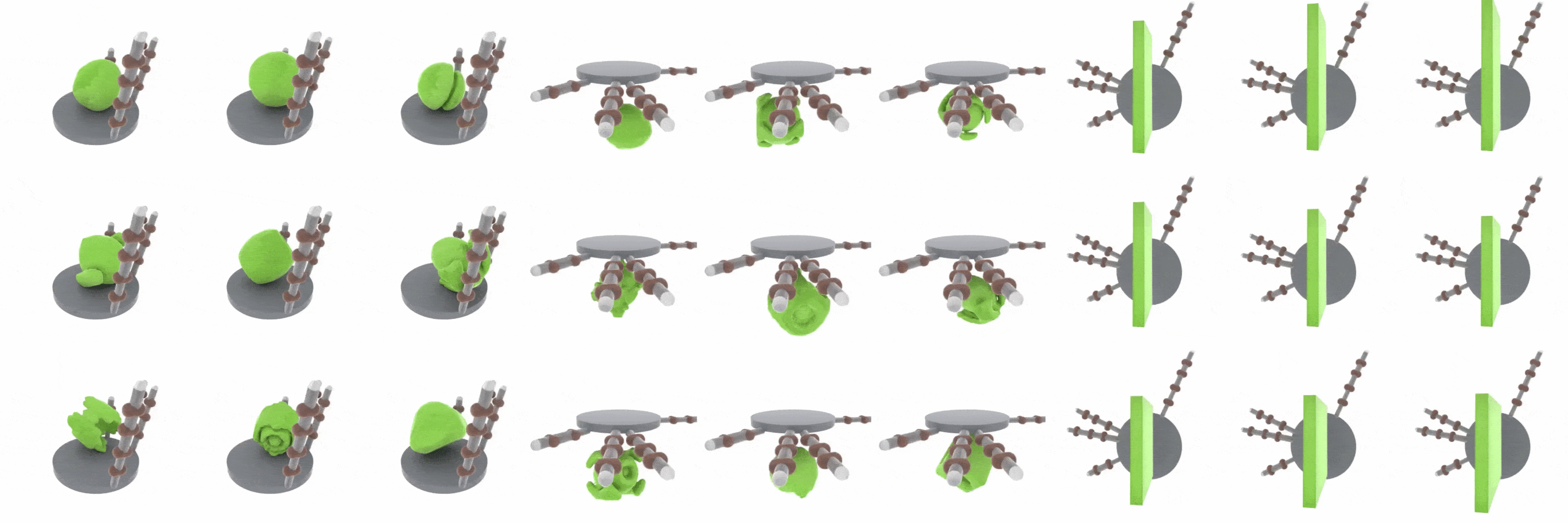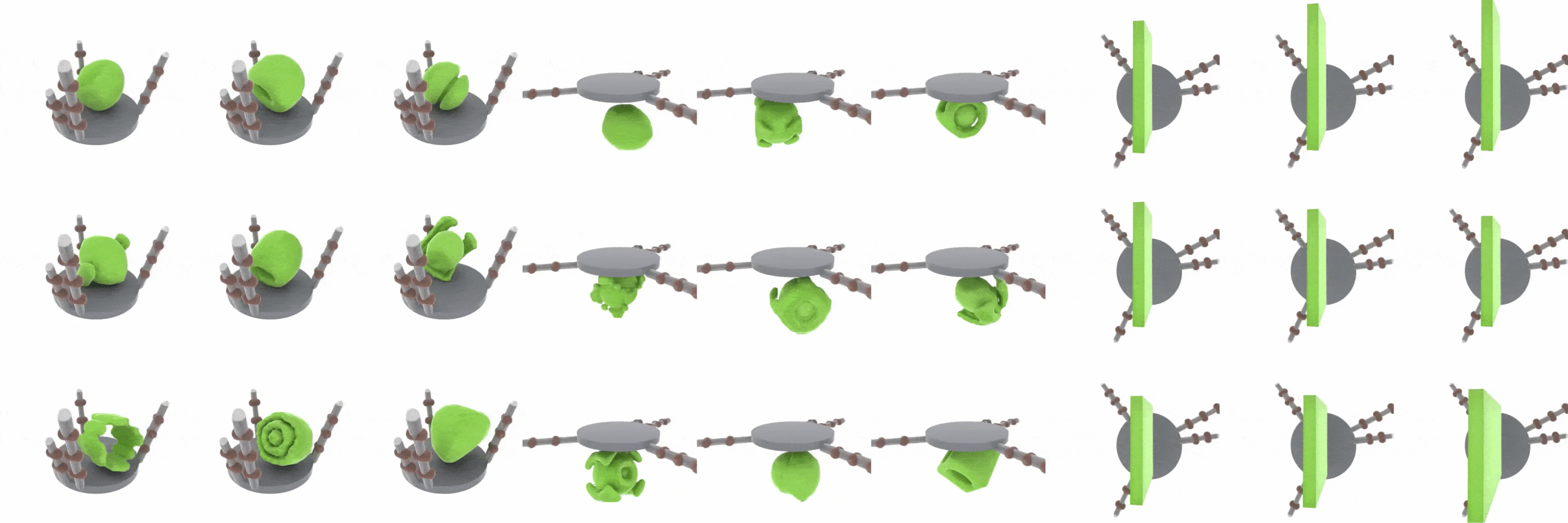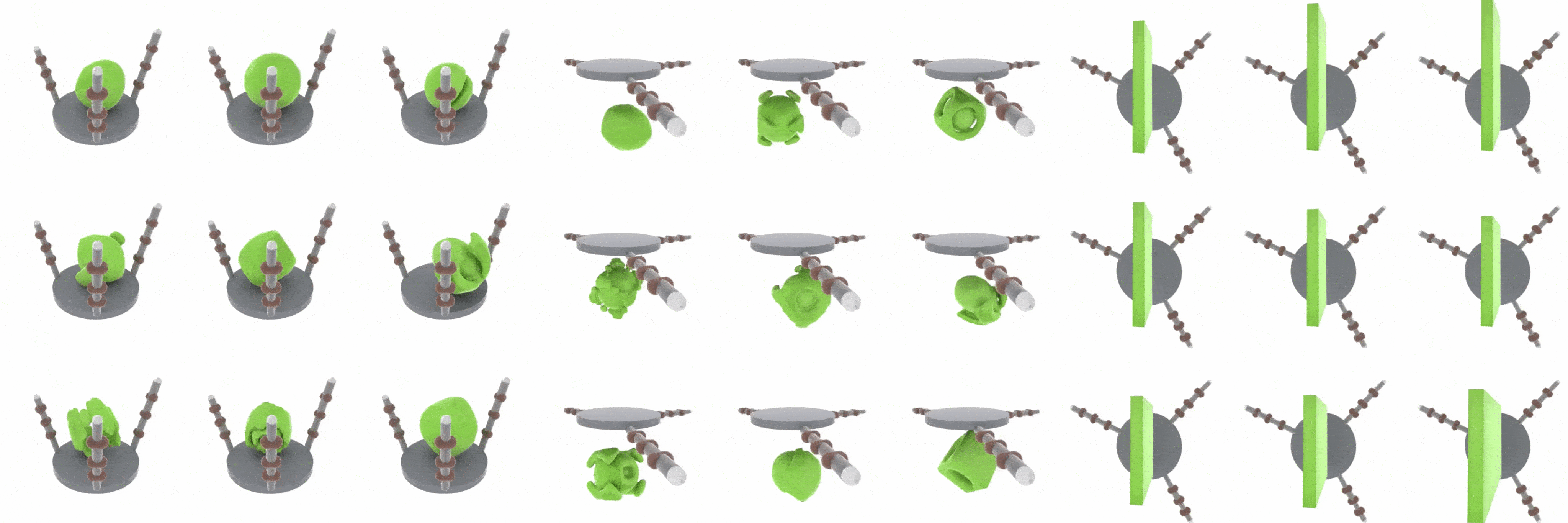from Optimizing Robust Grasps of Diverse Objects
Evolution in nature illustrates that the creatures' biological structure and their sensorimotor skills adapt to the environmental changes for survival. Likewise, the ability to morph and acquire new skills can facilitate an embodied agent to solve tasks of varying complexities. In this work, we introduce a data-driven approach where effective hand designs naturally emerge for the purpose of grasping diverse objects. Jointly optimizing morphology and control imposes computational challenges since it requires constant evaluation of a black-box function that measures the performance of a combination of embodiment and behavior. We develop a novel Bayesian Optimization algorithm that efficiently co-designs the morphology and grasping skills jointly through learned latent-space representations. We design the grasping tasks based on a taxonomy of three human grasp types: power grasp, pinch grasp, and lateral grasp. Through experimentation and comparative study, we demonstrate the effectiveness of our approach in discovering robust and cost-efficient hand morphologies for grasping novel objects.
Overview of the Algorithm
We jointly optimize the hand design and the control policy to solve diverse object grasping tasks. With representation learning of the design parameters in a latent space, our Bayesian optimizer (LABO) finds a robust and cost-efficient hand design for various grasp types.
 |
Latent Space Bayesian Optimization
The hand morphology design optimization includes 185 parameters, where 63 dimensions are used for controlling the hand grasping behavior and the other 122 dimensions are for specifying the structure design and physical property of the hand. Due to the high dimensionality of the optimization space, it is critical to use efficient representation learning to reduce the optimization space. We learn a representation learning module, consisting of the encoder, decoder, and predictor to cast raw morphology and control parameters into a latent representation. Then we perform Bayesian optimization in the latent space. We rely on simulated grasp trials to evaluate the generated hand morphology and control on success metrics.
 |
Design choices: Number of fingers, each individual fingers' number of segments, each segment's length, radius, positions where the fingers locate on the palm, lateral and spin friction parameter of the hand surface, limit of torque effort, limit of velocity, and damping for all joints, limits of joint angles.
More Examples of Optimized HandsUniform Sampling CMA-ES Standard Bayesian Optimization LABO (Ours) |